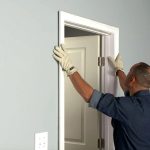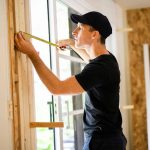The Evolution of Cased Doorway Styles
The cased doorway, an enduring architectural feature, has seen various adaptations over time. Its journey through design eras reflects changes in aesthetics and functionality. Initially, cased doorways featured simple wood trims. Their purpose was straightforward: to frame the transition between rooms. As tastes evolved, so did these structures. The Victorian era brought ornate details and embellishments, highlighting craftsmanship and luxury. By the mid-20th century, minimalism took hold. Clean lines and uncluttered designs became the hallmark of cased doorways.
The 21st century pushed the envelope further, blending tradition with innovation. Modern cased doorways now strike a balance. They flaunt sleek designs that nod to their classic roots. These updated versions experiment with materials and dimensions. Wide casings and tall doorways echo contemporary preferences for space and light. Casing profiles range from the understated to the bold, allowing personalization in each application. The evolution of cased doorway styles is not just about trends. It is also about technological advances and a better understanding of materials. This progress ensures that the cased doorway remains a staple in interior design.
Key Elements of Modern Cased Doorway Designs
Modern cased doorway designs bring together both form and function in a harmonious blend. Here are key elements that define this staple in contemporary interiors:
Sleek and Minimalistic Profiles
Today’s cased doorways often boast clean, straight lines that align with minimalistic design principles. These simple yet striking profiles create a sense of openness, making them a popular choice in modern homes.
High-Quality Materials
The right materials can make all the difference. Durable woods, MDF, and even metals are common in modern cased doorway constructions, ensuring longevity and aesthetic appeal.
Versatile Sizes and Shapes
Modern interiors often play with the scale of design elements. Cased doorways are no exception. From oversized entrances to unique geometric shapes, options abound to make a bold statement.
Customization Options
Personalization is key in the realm of modern design. Cased doorways now come with a variety of customization options, from intricate moldings to embedded lighting, allowing homeowners to tailor their space.
Integration With Home Technology
Smart homes require smart design. Contemporary cased doorways often incorporate technology for enhanced functionality, such as hidden wiring for security systems or automatic opening mechanisms.
Each of these elements plays a crucial role in the modern approach to cased doorway designs. Together they offer a streamlined look, while providing ample opportunity for homeowners to express individual flair and address their practical needs.
Popular Materials for Cased Doorways
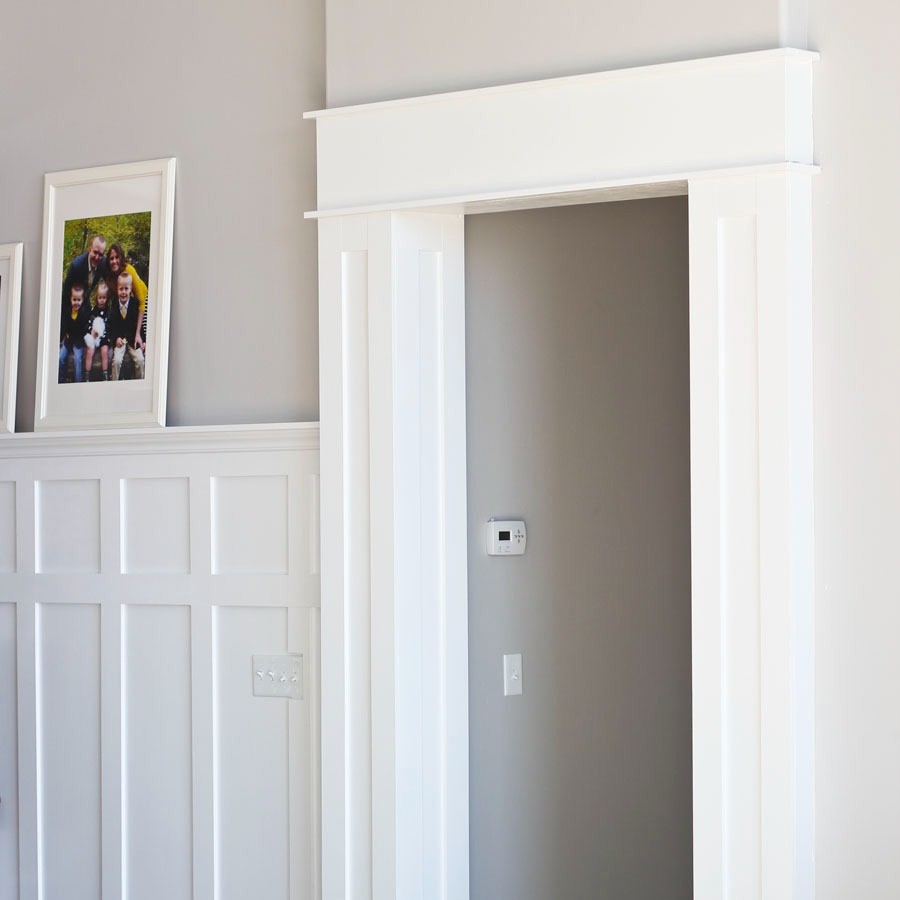
Selecting the right material is crucial for the success of any cased doorway design.
Durable Woods
Hardwoods like oak, maple, and cherry remain top choices due to their durability and timeless beauty.
Medium Density Fiberboard (MDF)
MDF is a cost-effective alternative that provides a smooth finish ideal for painting.
Metals
Metals such as steel or aluminum offer a modern twist and can enhance structural stability.
Exotic Woods
Exotic woods, although pricier, can introduce unique textures and patterns to a space.
Versatility and durability are key when choosing materials for cased doorways. Hardwoods ensure longevity, while MDF provides affordability without sacrificing style. Contemporary designs often incorporate metal for an industrial edge. Meanwhile, exotic woods cater to those seeking an exclusive look. Carefully selected materials will not only complement the aesthetic of a home but will also stand the test of time.
Color Schemes and Finishes for Cased Doorways
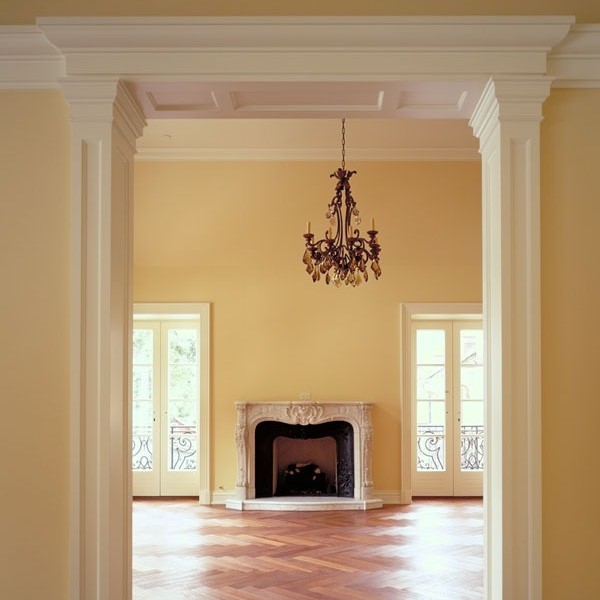
The right color schemes and finishes can transform a cased doorway into a design highlight. Here’s what to consider when choosing these elements:
Matching or Contrasting with Walls
Decide if your cased doorway should blend with the walls or stand out. A matching color creates harmony. A contrasting shade adds drama.
Paint Quality and Sheen
High-quality paint ensures durability and a sleek look. Choose a sheen—matte, satin, or gloss—based on desired effect and maintenance level.
Staining for Natural Wood
Staining can enhance the inherent beauty of wood casings. Pick a stain that complements other wooden elements in your space.
Metallic Finishes
Metallic finishes lend a modern touch. Consider gold, silver, or bronze for a hint of luxury.
Multi-Color Designs
For a playful touch, use multiple colors. This works well in eclectic or bohemian interiors.
Distressed or Antiqued Looks
Distressed finishes add character and history. They are perfect for vintage or rustic styles.
Choosing the right colors and finishes for your cased doorway is key to creating a cohesive interior. Combine function and style to make your cased doorway shine.
Incorporating Glass and Metal in Cased Doorway Designs
When it comes to modern cased doorway designs, glass and metal are materials that can significantly enhance the aesthetic appeal and functionality of a space. Using glass in cased doorways introduces elements of transparency and light, which can make interiors appear more spacious and bright. Homeowners and designers alike favor glass panels or full glass doors for their ability to merge indoor and outdoor spaces seamlessly.
On the other hand, metal is a material that brings strength and a contemporary edge to cased doorways. It easily integrates into various design styles, from industrial-chic to ultra-modern minimalist. Metals like steel and aluminum are not only durable but also offer slim profiles that maintain the sleek look of a caged doorway while ensuring stability.
The Appeal of Glass
Glass can be used in various ways within cased doorway designs. Clear glass maximizes natural light flow, while frosted or textured glass provides privacy without blocking light. Incorporating glass also allows for design continuity, visually connecting different rooms or indoor with outdoor spaces.
Metal Accents
Metal accents in cased doorways can serve both aesthetic and functional purposes. Thin metal frames or inlays can outline glass panels, enhancing their look while providing structural support. Stainless steel or brushed aluminum finishes add a touch of sophistication and are ideally suited to modern and minimalist decor.
Combining Glass and Metal
When glass and metal are used together in cased doorway designs, the result can be striking. The contrast between the materials creates a sleek and cutting-edge appearance. They can also be tailored to match the homeowner’s personal style, whether it’s for a statement entrance or subtle room division.
Embrace the beauty and innovation that glass and metal can bring to your cased doorway design. With careful selection and thoughtful design, these materials can redefine the ambiance and functionality of your interiors.
Cased Doorway Ideas for Different Home Styles
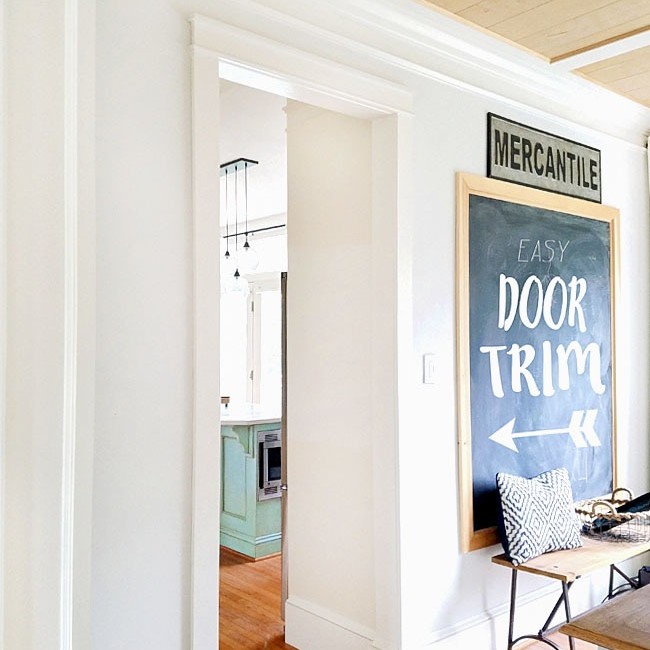
When selecting a cased doorway, it’s important to consider the style of your home. Here are some ideas to inspire you:
Traditional Homes
For traditional interiors, consider cased doorways with classic lines and moldings. Rich woods or painted finishes in white or cream can complement this timeless style.
Contemporary Spaces
Sleek, unadorned cased doorways fit well in contemporary spaces. Think about using materials like MDF or metals and finishes in neutral or bold hues.
Rustic Settings
In rustic homes, a cased doorway with a distressed wood finish adds character. Exotic woods with visible grain patterns also work well.
Industrial Lofts
Metal cased doorways, or those with metal accents, suit the industrial aesthetic. Steel or aluminum with their raw finishes can make a strong statement.
Modern Farmhouse
A modern farmhouse can benefit from a cased doorway in a simple design. Paint it in muted colors like sage green or soft blues for a fresh look.
Light woods and minimal embellishments are perfect for Scandinavian-inspired interiors. Keep the lines clean and the colors understated.
Eclectic Mix
For an eclectic approach, mix materials and finishes. Pair a metal casing with a colorful door, or add glass elements for a unique twist.
Coastal Retreats
Whitewashed or light-toned woods create a breezy, coastal vibe. Glass panels can enhance the open and airy feel of this style.
Vintage Charm
Antiqued finishes and more detailed moldings can revive the elegance of vintage interiors. Choose stains that bring out the wood’s natural beauty.
Each home style has its distinct charm, which can be echoed in the choice of cased doorway. Match or contrast your cased doorway with your home’s character to make a personal design statement. Remember, the right cased doorway can serve as a stylish and functional element that ties your space together.
Tips for Choosing the Right Cased Doorway for Your Space
Selecting the right cased doorway can be daunting. Consider these tips to make the process easier:
- Assess Your Interior Style: Align your cased doorway with your home’s decor. Choose a style that complements your space’s vibe.
- Measure Your Space: Before shopping, measure the doorway. Ensure that the chosen casing will fit perfectly.
- Think Long-Term: Pick a design that you’ll love for years. Opt for a timeless look to avoid future redesigns.
- Functionality Matters: Consider how the doorway will be used. Heavy traffic areas need durable materials.
- Light and Privacy Balance: Decide if you want more light or privacy. Glass options can offer both.
- Color Consideration: Select a color that matches your room or makes a statement. Look at color samples in different lights.
- Personal Touch: Add custom details that reflect your personality. Think about unique moldings or colors.
- Quality Matters: Invest in high-quality materials. They pay off in longevity and appearance.
- Eco-Friendly Options: If sustainability matters to you, choose eco-friendly materials. These are good for your home and the planet.
- Consult Experts: If you’re unsure, talk to a designer. They can guide you in making the best choice for your space.
By considering these tips, you will be well on your way to finding the perfect cased doorway for your home. The right choice will enhance your interior aesthetic and meet your practical needs.
Budget-Friendly Cased Doorway Design Solutions
When it comes to enhancing your home’s interior with a cased doorway, budget is a common consideration. Luckily, you can achieve a stylish look without breaking the bank. Here are some budget-friendly solutions for incorporating cased doorways into your home decor:
- Opt for MDF: Medium Density Fiberboard (MDF) is an affordable alternative to hardwood. It’s durable and provides a smooth surface that’s perfect for painting.
- Simple Designs: Choose cased doorways with straightforward designs. Avoid intricate moldings and embellishments to minimize costs.
- DIY Painting: Save on labor by painting the cased doorway yourself. A fresh coat of paint can make a big impact.
- Reclaimed Materials: Consider using reclaimed wood or metal. These can offer character and uniqueness to your cased doorway at a reduced price.
- Mix and Match: Use less expensive materials for the bulk of the casing and splurge on a few key features, like a unique doorknob or an elegant inlay.
- Refinish Existing Doorways: Instead of replacing, try refinishing the existing cased doorways. Sanding and staining can breathe new life into old wood.
- Shop Sales and Discount Outlets: Keep an eye out for sales at hardware stores or discount outlets that may offer lower prices on materials.
- Consult with Professionals: Sometimes, professional advice can help you find cost-effective solutions that you might not have considered.
By following these budget-friendly tips, incorporating a cased doorway into your space can be both economical and stylish. Remember to measure carefully, make smart material choices, and don’t be afraid to put in a little elbow grease to achieve a high-end look for less.
